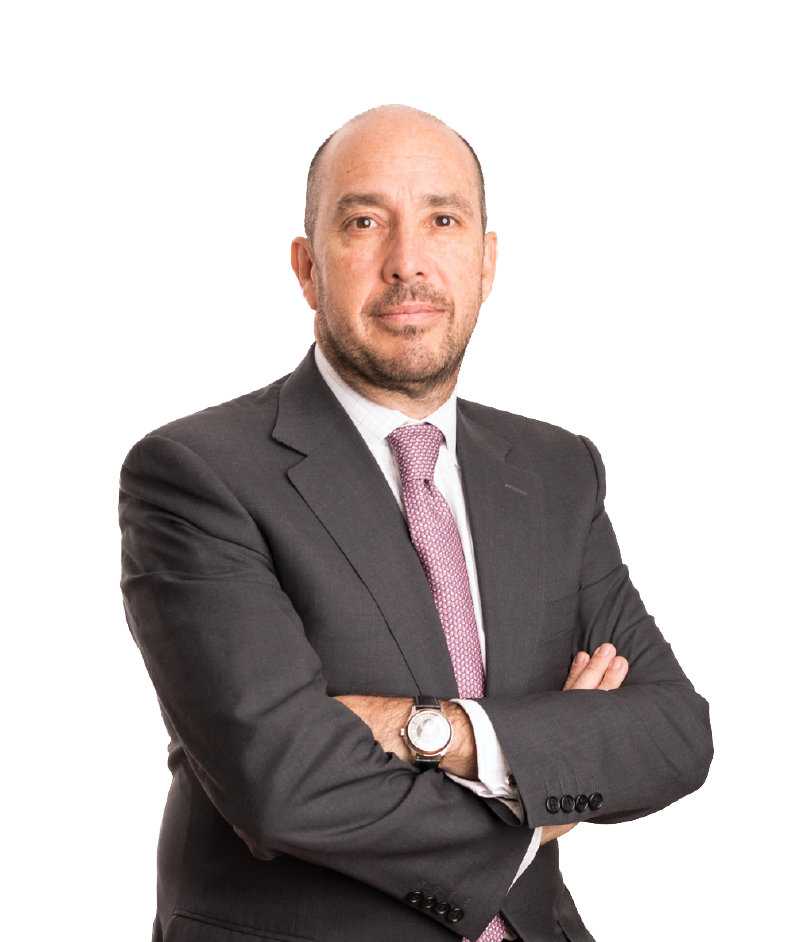The ferocity of competition in Latin America’s legal sector over the last decade has reshaped the region’s key markets. A genuine onslaught of factors – ranging from the challenges of institutionalisation and the arrival of international players to populist politics and the pandemic – has led to powerful change, eroding the former ‘magic circle’ groups that previously dominated most key jurisdictions and, in general, reducing them to just a couple of leading players. Latin America.
Beyond the upper echelons, the region’s markets have grown in terms of depth, professionalism and specialisation. Certain markets, most notably Chile, but also – increasingly – Colombia, are demonstrating a tendency towards an increasing proliferation of boutiques, which in turn bring their own challenges to more established market players. Below is an analysis of the region’s key Pacific Rim jurisdictions, working from north to south – and also a brief look at Argentina and Brazil. Latin America.
Mexico Latin America.
The ‘sombrero magico’ of the Mexican market long consisted of five firms: Creel, García-Cuéllar, Aiza y Enríquez (Creel GC); Galicia Abogados; Mijares, Angoitia, Cortés & Fuentes (MACF); Ritch Mueller; and White & Case – the group constituting a leading pack that dominated the transactional areas of banking and finance, capital markets and corporate/M&A. Other names more familiar today – such as Nader, Hayaux y Goebel (NHG) and Gonzalez Calvillo – had yet to fully emerge, while Greenberg Traurig didn’t open in Mexico City until 2011, and Barrera, Siqueiros y Torres Landa developed into Hogan Lovells’ Mexican outpost. Latin America.
Fast-forward ten years and a combination of ever-fiercer competition and the rigours and demands of institutionalisation have whittled this group down to a leading pair: Creel GC and Galicia. This does not suggest that the others have lost relevance – on the contrary, all remain highly competitive – but most have, over time, suffered reverses: Affinitas-alliance member, Mijares, endured the loss of its IP and dispute resolution practices; White & Case has similarly experienced departures, most recently losing six partners to an increasingly relevant DLA Piper; and Ritch Mueller, while successfully maintaining its position in the market, has outstanding questions over its future in terms of generational handover and strategic direction in the face of seemingly more thrusting firms.Latin America.
‘While the global economic and health situation has encouraged a price war here, in which smaller and less institutional firms have managed (with some success) to compete, we do not believe this to be sustainable.’ Latin America.
José Visoso, Galicia
Galicia co-managing partner José Visoso and competition and corporate partner Christian Lippert, explain the market: ‘Practically all the firms in the Mexican legal market have business models based on cost association (‘eat-what-you-kill’); Galicia and Creel – with different nuances – are the only members of the Mexican magic circle that have incorporated a more institutional and collaborative scheme. While the global economic and health situation has encouraged a price war here, in which smaller and less institutional firms have managed (with some success) to compete, we do not believe this to be sustainable. The most complex transactions remain concentrated in a smaller number of firms that can offer greater specialisation and better infrastructures. Undoubtedly, the offices that have been most favoured are, again, Galicia and Creel.’ Latin America.
NHG undoubtedly punches above its weight, providing premier-level service across its offering, but this remains considerably narrower than its full-service competitors. Greenberg Traurig, which has undergone significant overhaul in terms of the make-up of its Mexico team since it opened its doors, is increasingly well placed, but not yet on a footing to challenge today’s leading duo. These, demonstrating both adaptability and a willingness to take bold steps, have grown more aggressively than their competitors. Creel GC, for example, was the first firm to fully commit to building a sizeable in-house tax practice – an area dominated by specialist boutique Chevez Ruiz Zamarripa; while Galicia was first off the mark in terms of developing a genuinely robust regulatory practice and associated contentious administrative capability, an area which will prove highly useful under the current administration in Mexico. Latin America.
If a clear market vision illuminated this growth and consolidation, it was underpinned – in both cases – by relentless and unsentimental institutionalisation, both firms grasping that the key to ensuring the highest quality offering in an increasingly complex, regulated and volatile market was the strength of the platform constituted by the firm. Notably, they have done so in very distinct manners – they are regarded as virtual opposites in cultural terms – one seeking the productivity of a tensile structure that is highly competitive internally, while the other benefits from a highly collegiate working environment. Both models have been extraordinarily successful and elevated them beyond their competitors.
Colombia
In Colombia, again the long-dominant leading group – that comprised Brigard Urrutia, Goméz-Pínzon Zuleta, PrietoCarrizosa and Posse Herrera Ruiz (PHR) – has become increasingly fragmented.
Founded in 1934, traditional blue-chip presence Brigard Urrutia has retained its predominance in the market but today its clearest rival is the former PrietoCarrizosa, now transformed into the Colombian office of the multijurisdictional Philippi Prietocarrizosa Ferrero DU & Uría (PPU) – of which, crucially, it was the driving force in conjunction with Iberian giant Uría Menéndez. Meanwhile, both Affinitas-alliance member Goméz-Pínzon (which has undergone the separation from what is now Zuleta Abogodos Asociados) and PHR have retained relevance but lost position vis-à-vis Brigard and PPU.
Baker McKenzie’s local office – undoubtedly its strongest in the region – has been one of the main beneficiaries of this loosening at the top of the market, as has relative newcomer DLA Piper Martínez Beltrán (founded in 2015) and the market’s most recent entrant, Cuatrecasas, whose impressive and acquisitive arrival has impacted on virtually all the market’s main players as it aggressively built an office via the cherry-picking of local talent. Indeed, the reverberations of this arrival have been felt throughout the market – especially in the banking and finance sectors – as those firms that have lost key figures or teams have looked elsewhere to recruit and rebuild capability.
‘Strong and institutionalised firms have proven to have a clear advantage in the market. PPU has had the best years ever, not only based on its results but primarily on consistent institutional growth.’
Martín Acero, PPU
Once again, however, those firms that have emerged as predominant have done so by adopting (or maintaining) radically different paths: Brigard Urrutia by resisting the temptation to stray from its hard-earned role as an independent ‘national champion’; and the former PrietoCarrizosa as the driving force in the project to build a truly regional Latin American firm – PPU – of which today it constitutes the Colombian arm. Neither position is unassailable, and each office has had challenges to overcome over the last decade but, once again, systems, organisation and institutional efficiency are the keystones that characterise both operations.
Notes Martín Acero, managing partner of PPU: ‘Recent times have been challenging for all sectors of the global economy and the legal industry has not been the exception. Strong and institutionalised firms have proven to have a clear advantage in the market, given their capabilities in terms of comprehensiveness and excellence in client service, innovation, financial and technological strength and talent promotion and retention. For PPU, it has been a time to demonstrate to our clients, lawyers and administrative personnel, the value the firm gives to each one of them and therefore, it has allowed us to renew day by day our most faithful ties with our clients and our people. PPU has had the best years ever, not only based on its results but primarily on consistent institutional growth.’ Latin America.
Perú Latin America.
In the Peruvian market, a clear leading group was perhaps never quite so firmly established as in the other jurisdictions in this report – a factor related in part to the country’s recent political history (and its impact on both economic activity and the legislative framework) – and, debatably, to a slower process of market sophistication and professionalisation. Nevertheless, today Rodrigo Elías & Medrano –Abogados has consolidated a clear ascendancy, with Affinitas-alliance member Miranda & Amado Abogados, its clearest full-service competitor.Latin America.
Luis Carlos Rodrigo Prado, chair of Rodrigo Elías in Peru, is alive to the challenges: ‘There is certainly more competition, but the arrival of international firms has determined that there is a more limited pool of strong, independent, local outfits – which has benefited the few truly full-service local firms that remain. Additionally, those – like ourselves – that have a very high level of service quality across the board, are even fewer in number and have been able to manage the reduced fees that niche competitors are trying to offer as a result of having other practice areas where that issue is not a factor, thereby balancing the financial equation. In general, we feel that despite the growing competition and ongoing reduced fee-rate offers (which only damage service quality), firms such as ours – of which there are just two or three – are stronger than ever.’ Latin America.
The chasing pack, arguably led by Payet, Rey, Cauvi, Pérez Abogados and Rebaza, Alcázar & De Las Casas (although neither have the same breadth of service offering); Estudio Muñiz (full service but with a completely distinct partnership structure and market presence); and what was Estudio Echecopar (now Baker McKenzie), all remain relevant but have struggled to seize additional market share, as has Rubio Leguía Normand, which continues to seek a return to the leading group.Latin America.
The case of Rubio is noteworthy. A long-established leading firm, it lost its position in the leading group not as a result of a strategic misstep, but as the result of a number of tragic losses that weakened its position. Momentarily debilitated as a result, it would subsequently suffer further losses as competitors sought to hire away its talent. Certainly, to its credit, the firm has over the last five to eight years not simply reconsolidated its position but has also taken strides towards regaining its previous status. The lesson would appear to be that even the finest planning and strategy cannot always forestall difficulties arising from unforeseen ‘black-swan’ events. Latin America.
Elsewhere, it will be of considerable interest to watch the ongoing development and emergence of Hernández & Cia. Arguably the biggest surprise of the Peruvian market over the last five or so years, the firm has grown steadily, largely via lateral hires. This growth has been matched by increased market share and profitability, despite the pandemic; what remains to be fully proven is how the platform will extend beyond the eventual retirement of managing partner Juan Luis Hernández, who has engineered and driven this growth. Latin America.
Chile Latin America.
The Chilean market presents several aspects that make it a particularly interesting case study; one that perhaps signposts some of the developments likely to emerge in some of the larger, aforementioned markets over time. Like Colombia, the country endured serious and significant social protests from 2019 onwards, issues that the arrival of the pandemic would, at best, only mask. Like Peru, these would result in a significant political watershed: the crisis resulted in a commitment to completely rewrite the country’s constitution – a Pinochet-era document seen by many as the cornerstone of the country’s economic success, and by others as the embodiment of its social woes.
Here too, the market was long led by a circle of sizeable players with a broad (if not necessarily full) service offering. It included Claro & Cía; Carey; Cariola Díez Pérez-Cotapos; what was formerly Philippi, Yrarrázaval, Pulido & Brunner (today the Santiago office of PPU); and Affinitas-alliance member Barros & Errázuriz (BE). A substantial chasing pack that included Guerrero Olivos; Morales & Besa; Prieto & Cía; Bofill Mir & Álvarez Jana; and Baker McKenzie, among others, evidences one of the characteristic distinctions of the Chilean market – its considerable depth in terms of legal service offerings and provision.
‘The key is to keep your people and clients at the centre of what you do. When this is so, empathy, excellence and dedication become your guide. Loyalty to your values can let you weather all storms, even a pandemic.’
José María Eyzaguirre, Claro & Cía
Age-old market stalwart, Claro & Cía (with its broad but by no means full-service offering), and market leviathan Carey (which, with some 260 lawyers, now dwarfs its competitors) have proven adept at managing market pitfalls. In the case of Claro, by staying true to its origins and resisting the siren call of growth; in the case of Carey, by cannily harnessing expansion – from the rapid development of the firm’s IP practice to the opening of a representative office in Miami. Latin America.
José María Eyzaguirre, managing partner of Claro & Cía, is sanguine: ‘The key is to keep your people and clients at the centre of what you do. When this is so, empathy, excellence and dedication become your guide. Loyalty to your values can let you weather all storms, even a pandemic. We have learnt that open eyes and ears let you understand better their needs and how to make a difference. We take pride in the support that we find, even among competitors, but most of all, from our clients seeing us as distinctive and exemplary in every sense.’ Latin America.
Others have found the going far tougher: the former Philippi has found the transition into being PPU’s Chilean office a challenging process; Cariola has seen its market dominance in the IP sector and the mining industry fade over time; while Barros & Errázuriz – which always had a more domestic footprint than its rivals – is facing the issue of generational handover common to all the firms founded to serve the wave of privatisations that swept the region in the 1990s.Latin America.
In Chile too, international arrivals have made their mark, with DLA once again steadily developing, and the more recent and aggressive arrival of Cuatrecasas leaving its mark, most notably on Guerrero Olivos and PPU, but also on several other offices, such as the former Baraona Fischer.Latin America.
Undoubtedly, however, an additional distinguishing factor in the Chilean market is the unprecedented proliferation of boutique firms. While these mostly remain in traditional sectors – tax, IP and particularly dispute resolution – where boutique specialisation is commonplace, this phenomenon is increasingly impacting other areas – notably corporate/M&A, private equity, compliance and data privacy – driven by the inability of many of the largest firms to retain the talent they themselves have developed. With an economy at risk of considerable contraction due to the uncertainty arising from the rewriting of the constitution, many firms are hesitant about making up new partners, increasing the departure rate of talented, trained and experienced lawyers, who are increasingly willing to establish their own operations. While many of these start-ups are not destined to survive (their challenge is one of maintaining market visibility), the sheer number of such firms constitutes a significant factor, especially given their lower overheads. With partners also willing to strike out for pastures new (former Barros & Errázuriz tax head María Teresa Cremaschi’s departure for what is now MBC Abogados; or Gerardo Cruzat’s move from Prieto to Fischer & Cía, or Sebastián Yunge from Guerrero to Grupo Evans, all being cases in point).
Internartional arrivals Latin America.
It is quite clear that the arrival of international firms has played its part in disturbing the status quo in Latin America’s major markets. While a number of firms have long trajectories in the region – White & Case’s presence in Mexico dates back to the 1990s, for example – in retrospect, it was Baker McKenzie’s 2012 takeover of Peruvian market mainstay Estudio Echecopar that sounded the starting gun not only for the arrival of other international firms, but also an ever-sharper degree of competition in part derived by the sense of vulnerability among market-leading firms in the wake of that takeover.Latin America.
Since then, the region has not only seen a steady influx of international players: some, such as Greenberg Traurig and Hogan Lovells with just one office, while others – notably CMS, Cuatrecasas, Dentons, DLA Piper, ECIJA, Garrigues, Jones Day and Uría Menéndez – have sought a far greater Latin America footprint. While none to date have achieved leadership of the markets they have entered (Greenberg Traurig in Mexico, DLA Piper in Colombia and, to some degree Chile, are probably the best positioned), there is no doubt that the arrival of all these firms has irrevocably changed the complexion of the markets. As much as simply constituting another competitor, the real significance of these entries has been their offering of a genuine alternative not just to clients but also to talented and ambitious lawyers – heightening competition and costs for talent recruitment and retention, and effectively requiring local firms to modernise to remain competitive.Latin America.
‘The formula of Marval’s success is the complete conviction that Marval transcends its founders and that no one individual is overly important in the firm, all of which helps build mutual trust and teamwork among its partners.’
Santiago Carregal, Marval O’Farrell Mairal Latin America.
Brazil & Argentina Latin America.
It is also worth contrasting the developments sketched out above with the region’s two other major jurisdictions, Brazil and Argentina, which in turn show very distinct developments.Latin America.
In Brazil, which despite the local Bar-mandated exclusion of international law firms and its fluctuating political situation has also been subject to unrelenting competition, there is a pair of firms that have unerringly consolidated their dominance over the last five years.Latin America.
On the one hand, the traditional blue chip Pinheiro Neto Advogados (which celebrates its 80th anniversary this year), and on the other the youthful Mattos Filho, which launched in 1992 and accompanied the changes to Brazil’s financial system that saw the opening of its capital markets to foreign investment and reform that allowed Brazilian companies to issue securities abroad. Pinheiro Neto has just successfully completed the election and handover of the managing partner role from Alexandre Bertoldi to Fernando Meira, over a partnership that is generated strictly via internal promotion.
Mattos Filho, on the other hand, has espoused aggressive growth, particularly over the last decade, and largely via lateral hires. This has seen it outstrip all competitors in terms of size (currently some 847 lawyers, including 119 partners, compared to Pinheiro Neto’s 814, with 114 partners). Both, in turn, have outpaced growth at their nearest competitors with only Machado Meyer and TozziniFreire surpassing 500 lawyers, while other names in the market – such as BMA, Demarest, Lefosse and Veirano – currently number between 300 and 400 lawyers.Latin America.
Argentina is no less competitive, but as a result of limited economic activity (the country has remained largely excluded from international markets since its sovereign debt default), simply does not have the volume of transactional activity to create the abrasive conditions where firms can really differentiate themselves. Here, instead, the country’s traditional leading group has gone some way to reconstituting itself. Undoubted market leader Marval O’Farrell Mairal has very successfully transitioned to its newest managing partner and chair, as has Bruchou (BFMyL), which has similarly managed the process of generational handover during the last few years.Latin America. Latin America.
Santiago Carregal, chair of Marval O’Farrell Mairal, notes: ‘I’m often asked what the formula of Marval’s success is; in my opinion there no single reason, but that probably the most important one is the institutionalisation of the firm. It is the complete conviction that Marval transcends its founders and that no one individual is overly important in the firm, all of which helps build mutual trust and teamwork among its partners. Founder Jorge O’Farrell always said: “what is good for is always good for its partners”. It is a firm that is not scared to make changes if that results in a better service to its clients. We say that we are like the bamboo cane: flexible, willing to adapt to the new circumstances, but very strongly attached to the ground, because the only things that never change are our values.’Latin America.
Market mainstay Estudio Beccar Varela remains similarly strong, while both Allende & Brea (once tipped to disappear entirely following a series of spin-offs in the early 2000s) and Bomchil (which has recently made notable hires in both tax and energy), despite being smaller firms, are very much back to their former heights and at the forefront of the market. In the case of Perez Alati (PAGBAM), also an established key pillar of the market, it endured a significant spin-off with the departure of what is today MHR Abogados (itself now a full-service player), back in 2018; it remains to be seen if its subsequent cross-border tie-up with Chilean firm Schwencke Abogados (to create PAGBAM Schwencke Chile), will mitigate this loss.Latin America.
As the Argentine case bears out, it is the competition fostered by an adequate level of economic activity that has led to the honing of each of these legal markets. It is also clear that the size of the market itself is significant – neither the ban on international firms in Brazil, nor the populist policies of administrations such as that of Andrés Manuel López Obrador in Mexico have dampened competition in those markets. In the cases of Chile (where a re-written constitution faces a plebiscite in early September); Peru (where the left-wing administration of José Pedro Castillo lurches from crisis to crisis); and Colombia (where the country awaits an imminent and polarised electoral run-off between populist presidential candidates Gustavo Petro and Rodolfo Hernández), the near-to-mid-term future of these markets remains very much up in the air. LB








